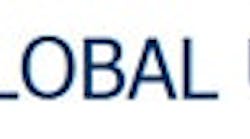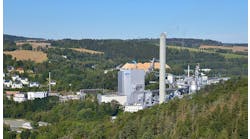"There's a tremendous opportunity for all of us," Sonnenberg said. "Oil and gas companies can increase efficiencies, reduce costs and come out stronger. Industries that can take advantage of lower feedstock and energy prices can raise productivity and make the most of their assets."
"How are your companies reacting?" Sonnenberg asked. "Travelling around the world, the executives I talk with feel a need for transformative improvements. Pressed by their boards of directors, they're saying this is not a time to be satisfied with being as good as everyone else."
Performance in any field can be divided into quartiles, with the best 25% of people, facilities or companies in the top quartile. It's not a single, overall rating—you can be in different quartiles for different measures, such as safety, scrap and rework, return on assets, etc.
Reliability must be writ large
For example, one study found availability ranges from 84% in the bottom quartile to 97% in the top. "For a large refinery, 1% is worth $8 million dollars per year," Sonnenberg said. "Obviously, you want to take a plant that's struggling or just OK, move it to the top and keep it there. But how?"
Automation engineers are among the people who understand plant operations the best, but what do you do when you can't move the needle? You need to find a lever—a different approach. To look at things differently. For example, instead of reacting to unnecessary gas flares—what if you could use big data and predictive technologies to see those coming 15 minutes before they occurred?
"The top quartile writes reliability with a big R—as part of everything that happens throughout the lifecycle of the plant." Steve Sonnenberg, president, Emerson Process Management, encouraged attendees to elevate their expertise at the 2015 Emerson Global Users Exchange.
Despite achieving much lower availability, "The bottom quartile spends 3-1/2 times as much on maintenance as the top quartile," Sonnenberg said. "There's a $50 billion total global savings opportunity if all companies used top-quartile predictive maintenance." In areas from safety and availability to energy costs, you can find similar opportunities."The top quartile writes reliability with a big R—as part of everything that happens throughout the lifecycle of the plant," Sonnenberg said. "Big-R reliability is using integrated information, systems and work processes across the whole operation and at every level of the business. It's understanding where the greatest risks and rewards are, so you can spend your time and money in the most important areas. It's putting all the pieces in place and connecting them so the right information gets to the right people at the right time—and you can move from reactive maintenance to condition-based maintenance."
Big-R reliability isn't just a maintenance-department responsibility, it's also a business strategy. In new facilities, designing reliability in from the start could result in 18 more days of production and savings of more than $40 million on maintenance spend, Sonnenberg said. "It's a transforming method."
Too many failing projects
Jim Nyquist, president, systems and solutions, for Emerson, spoke about the need for transformative approaches in how industry carries out projects. "Today, 65% of projects worth more than $1 billion and 35% of projects under $500 million fail, where failure is defined as at least 25% over budget and/or late by 50%," Nyquist said. "Budgets have increased but expenditures have increased more, especially on larger projects."
The reasons for these failures range from the large size and complexity of many of today's projects to their remote locations where the availability of roads, power and people are real obstacles. A significant contributing factor is changes during the project.
Emergent BioSolutions’ Daniel Reid, chairman of this year's Emerson Global Users Exchange, welcomed some 3,000 attendees to the Colorado Convention Center Monday morning. Reid credited the ongoing dedication of the Exchange board, together with the active engagement of the entire Exchange community, with continuing to improve the value of this "for users, by users" event.
The result is more custom (unique) projects where uncertainty and complexity lead to cost and schedule overruns. "Automation has not been the major cause, but it can make a big difference, and it's on the critical path during start-up," Nyquist said. "What if automation—that 4% of your overall project investment—could be your lever to have a dramatic and measurable impact on the entire project?"Goals of reducing overall project budgets by 20-30% are becoming common, and we need to find ways to make project completion more predictable and reliable, Nyquist said. "Over the past few years, we have collaborated with many of you—users and contractors—to explore how the industry could achieve such important goals," Nyquist said. "We have combined our collective project experience, and we've gained tremendous insight from you.
"We also worked with partners like Independent Project Analysis (IPA), which benchmarks capital projects, and have learned that top-quartile projects are completed at roughly half the cost and half the time of poorly performing or fourth-quartile projects.
"Said differently, top-quartile performers can accomplish twice as much as fourth quartile performers."
Nyquist identifies three imperatives for top-quartile project success: 1) eliminate costs, 2) reduce complexity, and 3) accommodate change.
"All these things are possible, and that is why today, Emerson is proud to announce Project Certainty," Nyquist said. Learn more about Project Certainty in the accompanying story, and by attending presentations in the iOps Theater in the exhibit area each evening during the Exchange.
The path forward
"The path to top quartile project performance is right in front of us," Nyquist said. "The technologies and proven methodologies are here. But it will take the commitment and a collaborative effort between end users, contractors and Emerson.
"Project Certainty is enabled by new technologies, but it's only realized when we change processes and methodologies. If we do that, we will be successful in transforming the way projects are done, and bring Project Certainty back to capital projects."
Whether it be for project execution, Big-R reliability, or other reasons to elevate your automation expertise to improve operations, how do you find the right lever? "Look at things differently, gain insights, put it together and find your way," Sonnenberg said. "When you do, you can count on Emerson to make it happen. We'll help you achieve top-quartile performance. We have the technologies, the expertise, and the experience. We've proven that we can do it, and we'd like to do it with you."





